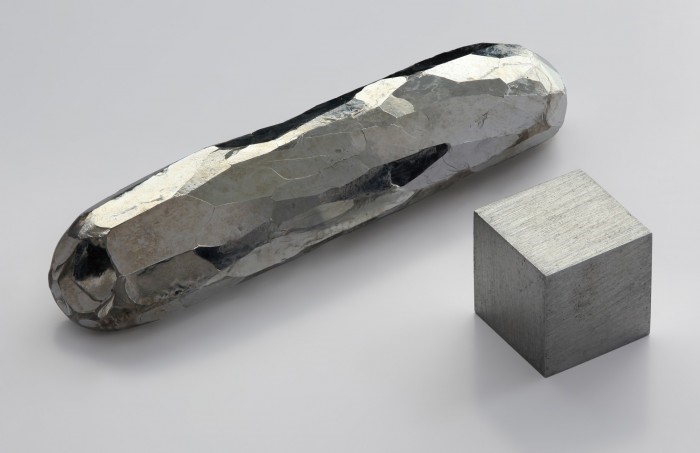TANTALUM

Disclaimer: Copyright infringement not intended.
Context
- A team of researchers from the Indian Institute of Technology (IIT), Ropar has found the presence of tantalum, a rare metal, in the Sutlej river sand in Punjab.
Details
- Tantalum is a rare, hard, blue-gray, lustrous transition metal that is highly resistant to corrosion.
- It belongs to the refractory group of metals, which also includes niobium, tungsten, and rhenium. Tantalum has found diverse applications across various industries due to its unique properties.
Properties of Tantalum
- Corrosion Resistance: Tantalum exhibits exceptional resistance to corrosion by acids and has a high melting point, making it suitable for use in corrosive environments.
- Ductility and Malleability: Despite its hardness, tantalum is ductile and can be drawn into thin wires or sheets.
- Heat Resistance: Tantalum has a high melting point of 3,020°C (5,468°F), allowing it to withstand high temperatures.
- Biocompatibility: Tantalum is biocompatible and is used in medical implants and devices because it does not react adversely with bodily fluids.
Uses and Applications
- Electronics Industry: Tantalum capacitors are essential components in electronics, particularly in smartphones, laptops, and other electronic devices due to their high capacitance and reliability.
- Chemical Processing: Tantalum's resistance to corrosion makes it valuable in the chemical industry for manufacturing reaction vessels, heat exchangers, and other equipment used in corrosive environments.
- Medical Implants: Tantalum is used in surgical implants, such as bone repair devices, because of its biocompatibility and ability to integrate with bone tissue.
- Aerospace and Aviation: Tantalum is employed in jet engines, airframes, and other components in the aerospace industry due to its ability to withstand high temperatures and corrosive environments.
- Super Alloys: Tantalum is used in the production of high-performance alloys, enhancing their strength, corrosion resistance, and high-temperature capabilities.
- Military and Defense Applications: Tantalum is used in armor plating and various military applications due to its strength and durability.
Mining and Supply
- Tantalum is obtained primarily from tantalite and columbite minerals, often found in association with niobium.
- The major tantalum-producing countries include Australia, Brazil, Rwanda, the Democratic Republic of Congo, and China.
- The mining of tantalum has been linked to social and environmental issues, including illegal mining, conflict resources, and ethical concerns.
Challenges and Concerns
- Conflict Minerals: Tantalum is one of the minerals classified as a "conflict mineral" due to its association with armed conflict, human rights abuses, and illegal mining in certain regions, especially in the Democratic Republic of Congo.
- Supply Chain Transparency: Ensuring a transparent supply chain for tantalum remains a challenge to guarantee ethically sourced material, free from conflict.
- Price Volatility: Tantalum prices can be volatile due to supply chain disruptions, geopolitical factors, and changes in demand from various industries.
Environmental Impact
- While tantalum itself is highly resistant to corrosion and has a long lifespan in applications, the mining and extraction processes can have environmental impacts, including habitat disruption, soil erosion, and potential water contamination if not managed properly.
Discovery and Name Origin
- Discovered in 1802 by Anders Gustaf Ekenberg in minerals obtained from Ytterby, Sweden.
- Initially mistaken for niobium, it was differentiated as a distinct element by Jean Charles Galissard de Marignac in 1866.
- Named after the Greek mythological figure Tantalus due to its insolubility in acids, mirroring Tantalus' inability to consume food or drink in mythology.
Significance of the Discovery
- The discovery of tantalum in the Sutlej river sand in Punjab opens up potential avenues for mining and extraction.
- Given tantalum's rarity and significant demand across multiple industries, its discovery in this region could potentially impact the local economy and contribute to the global supply chain of this valuable metal.
- Understanding its presence in the region may pave the way for further exploration, mining operations, and potentially sustainable sourcing of tantalum, provided environmental and ethical considerations are addressed.
Conclusion
tantalum's unique combination of properties has made it indispensable in numerous industrial applications. Efforts to ensure responsible sourcing, mitigate environmental impacts, and address ethical concerns associated with its mining and trade are essential for the sustainable use of this valuable metal.
|
PRACTICE QUESTION Q. Discuss the significance of tantalum as a rare metal in industrial applications and its recent discovery in the Sutlej river sand in Punjab. Also, elucidate the challenges associated with the responsible mining and global supply chain of tantalum. (250 Words) |





1.png)
